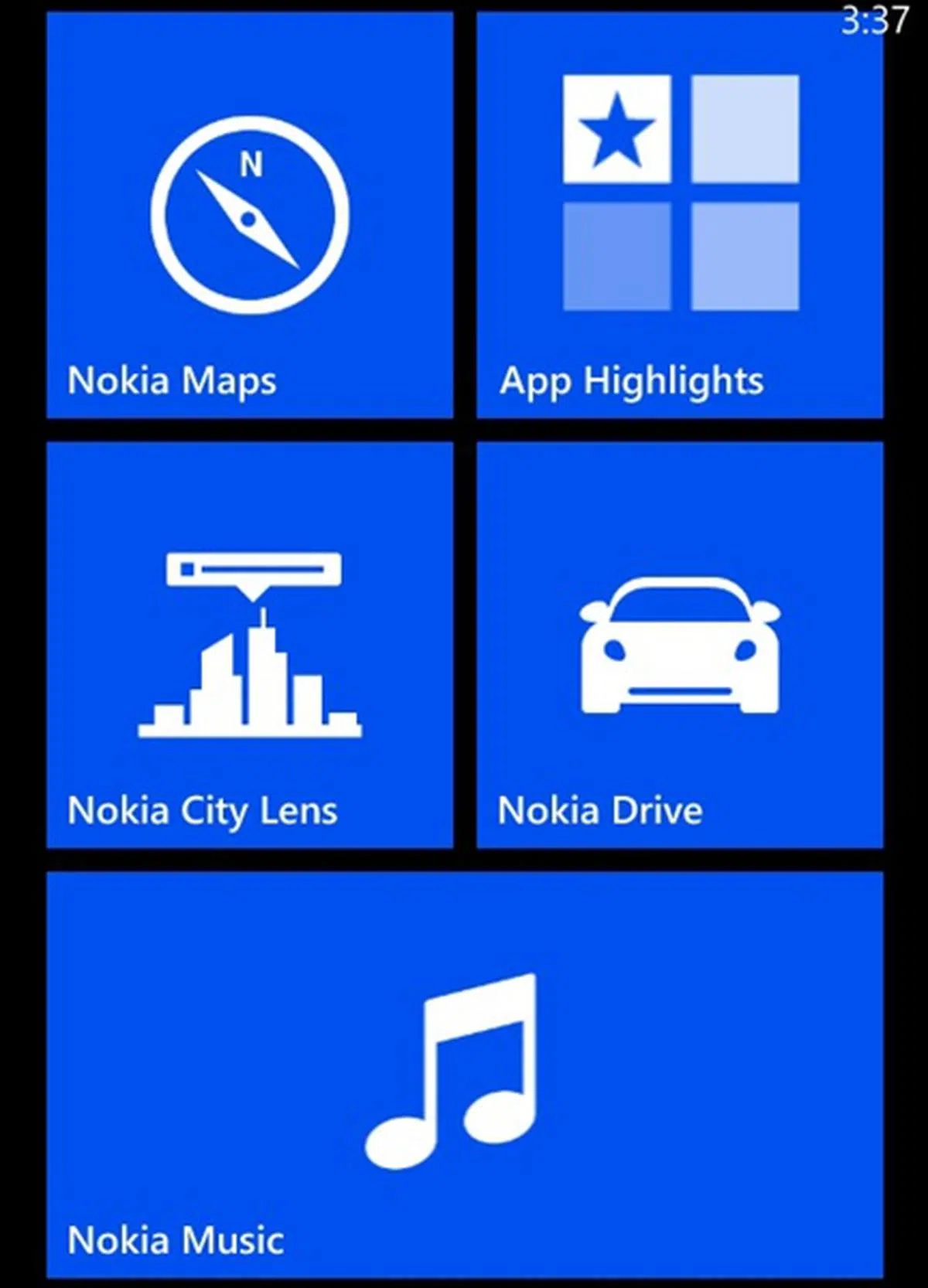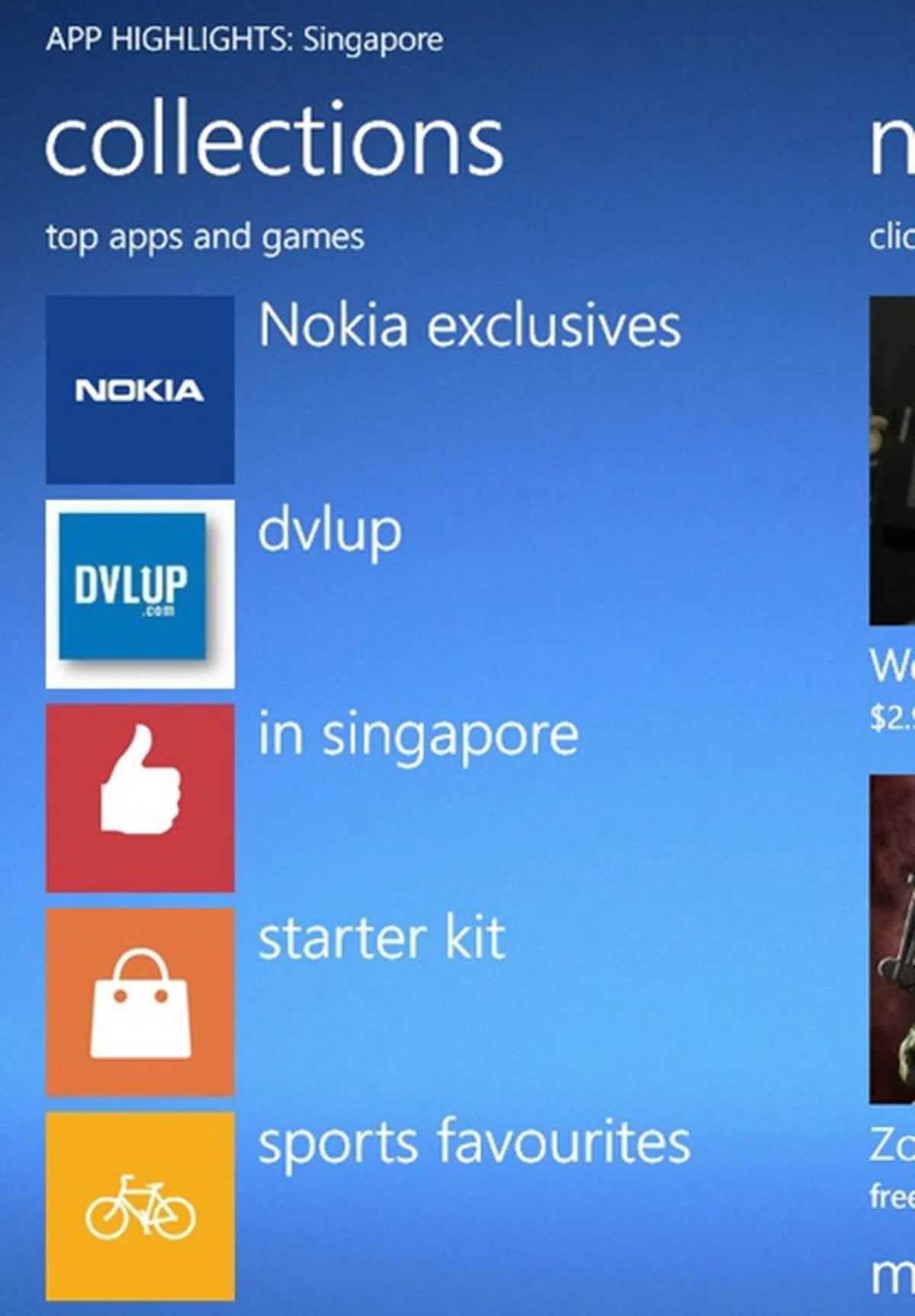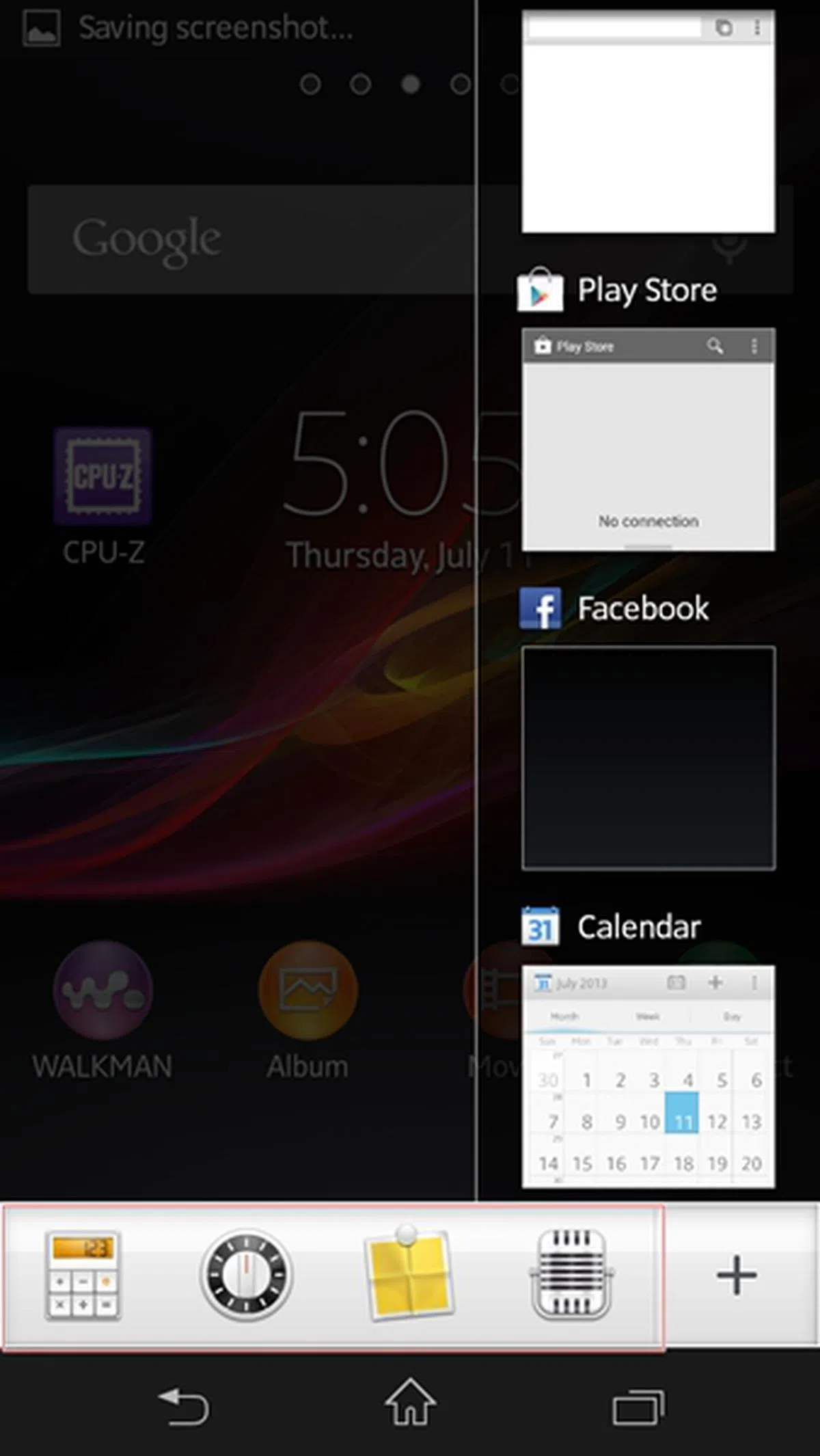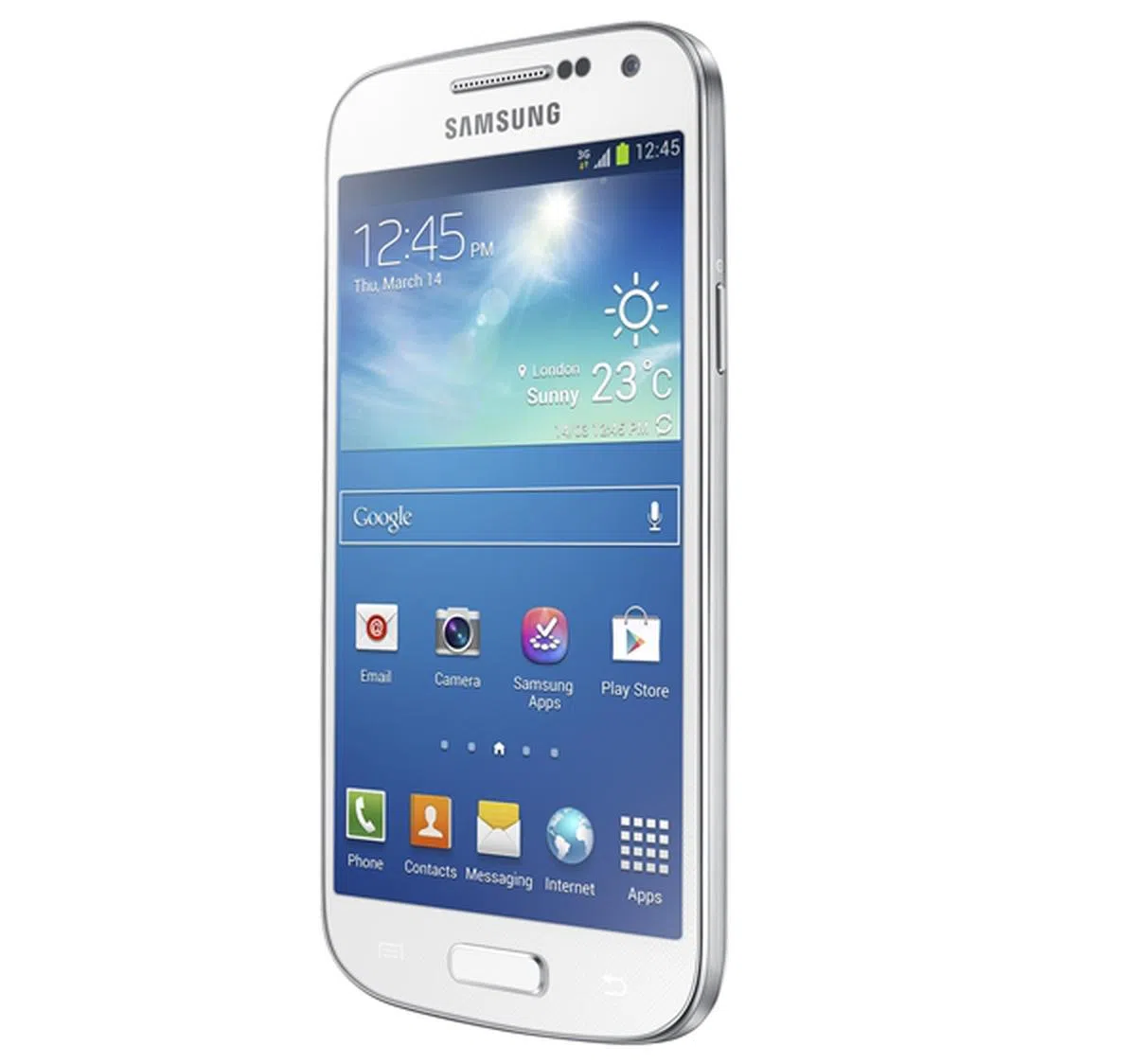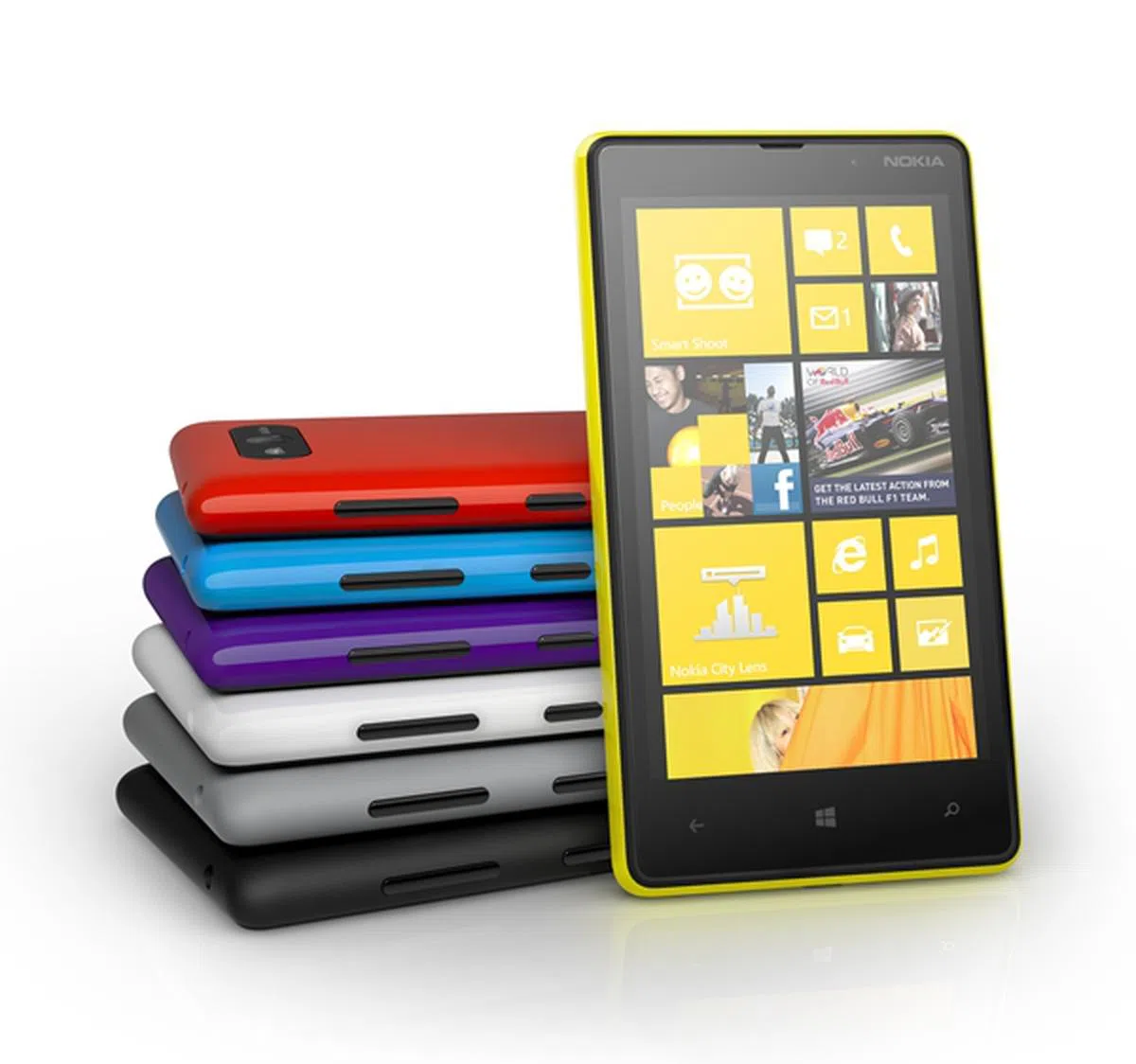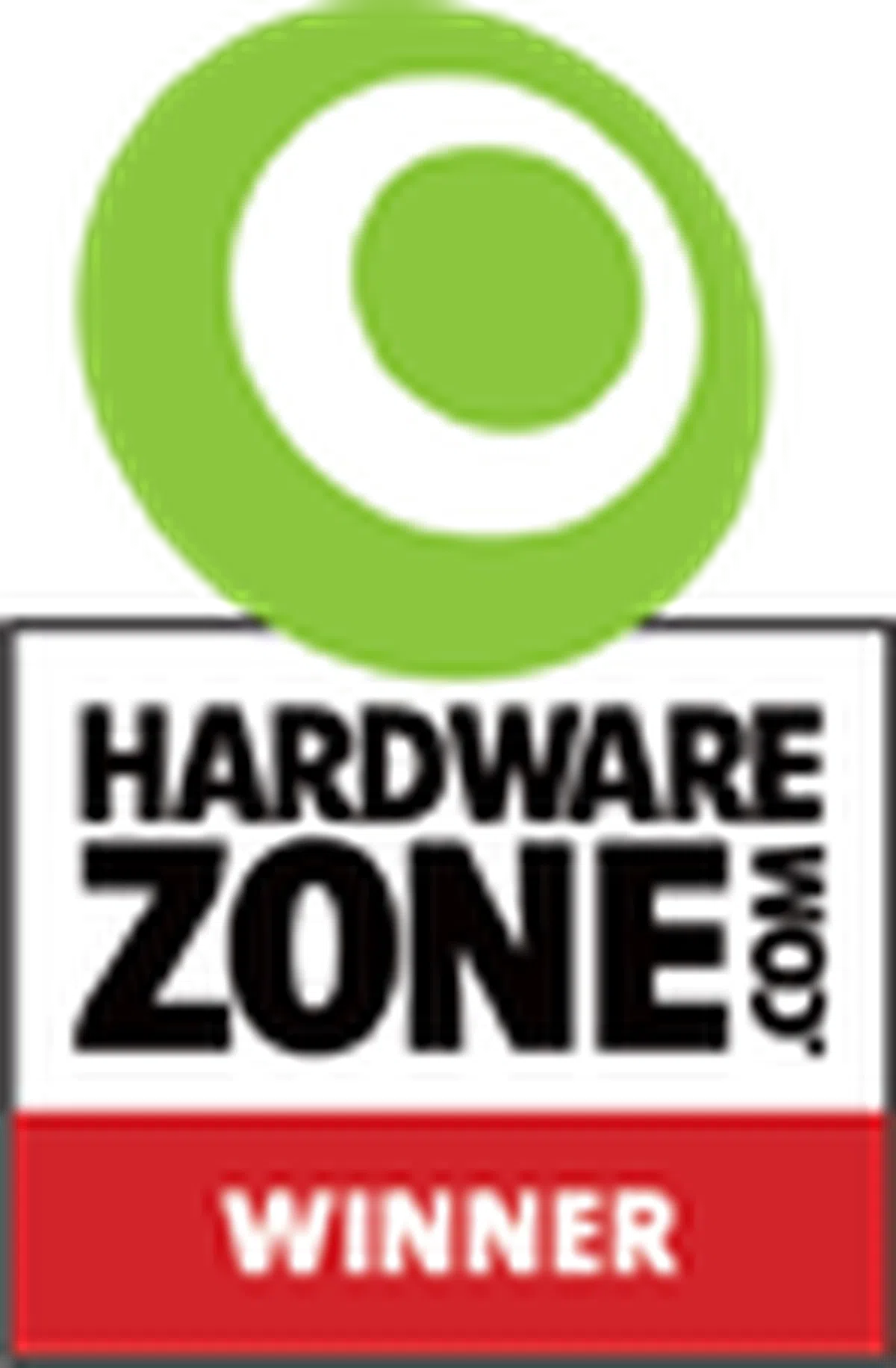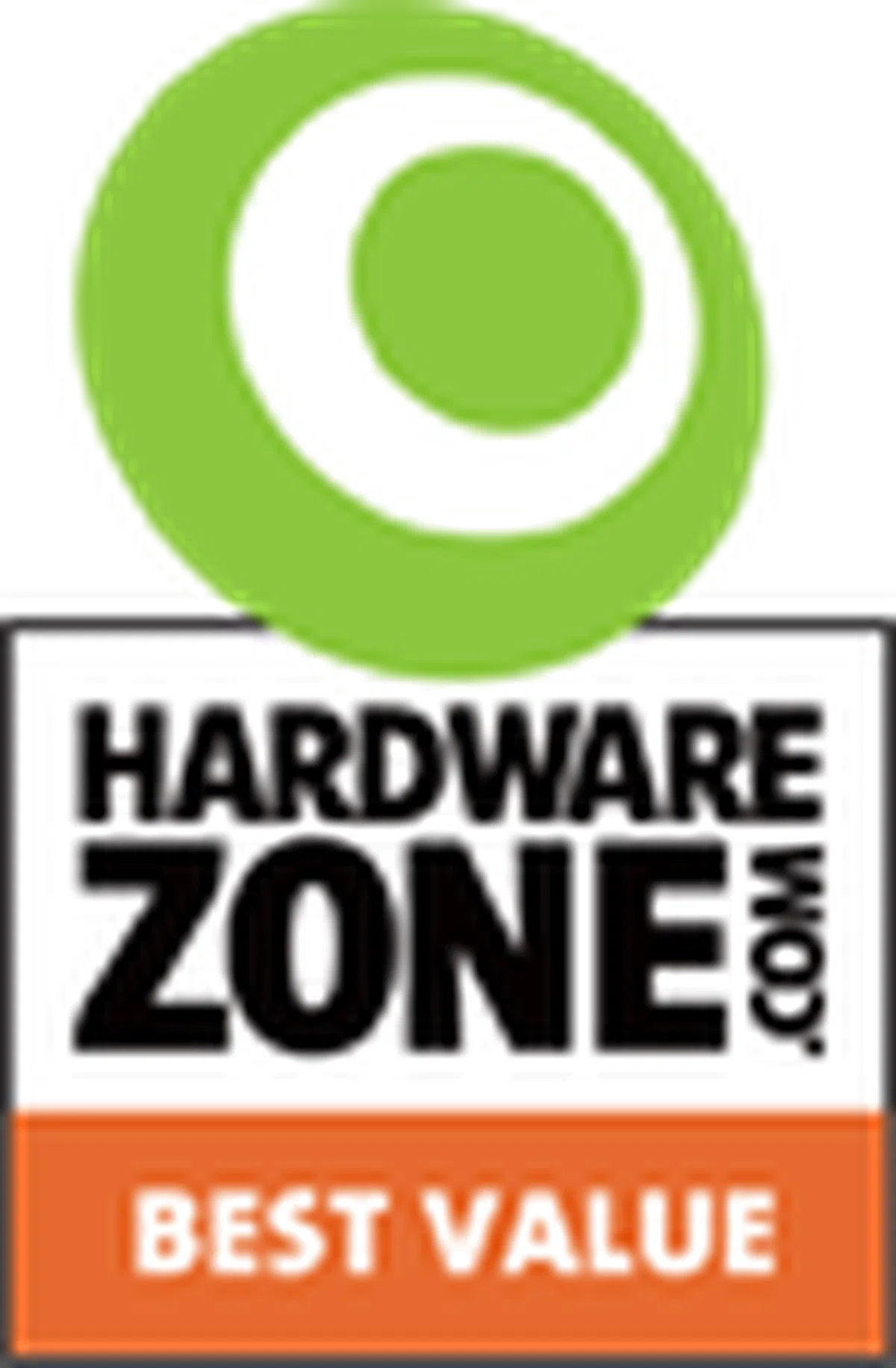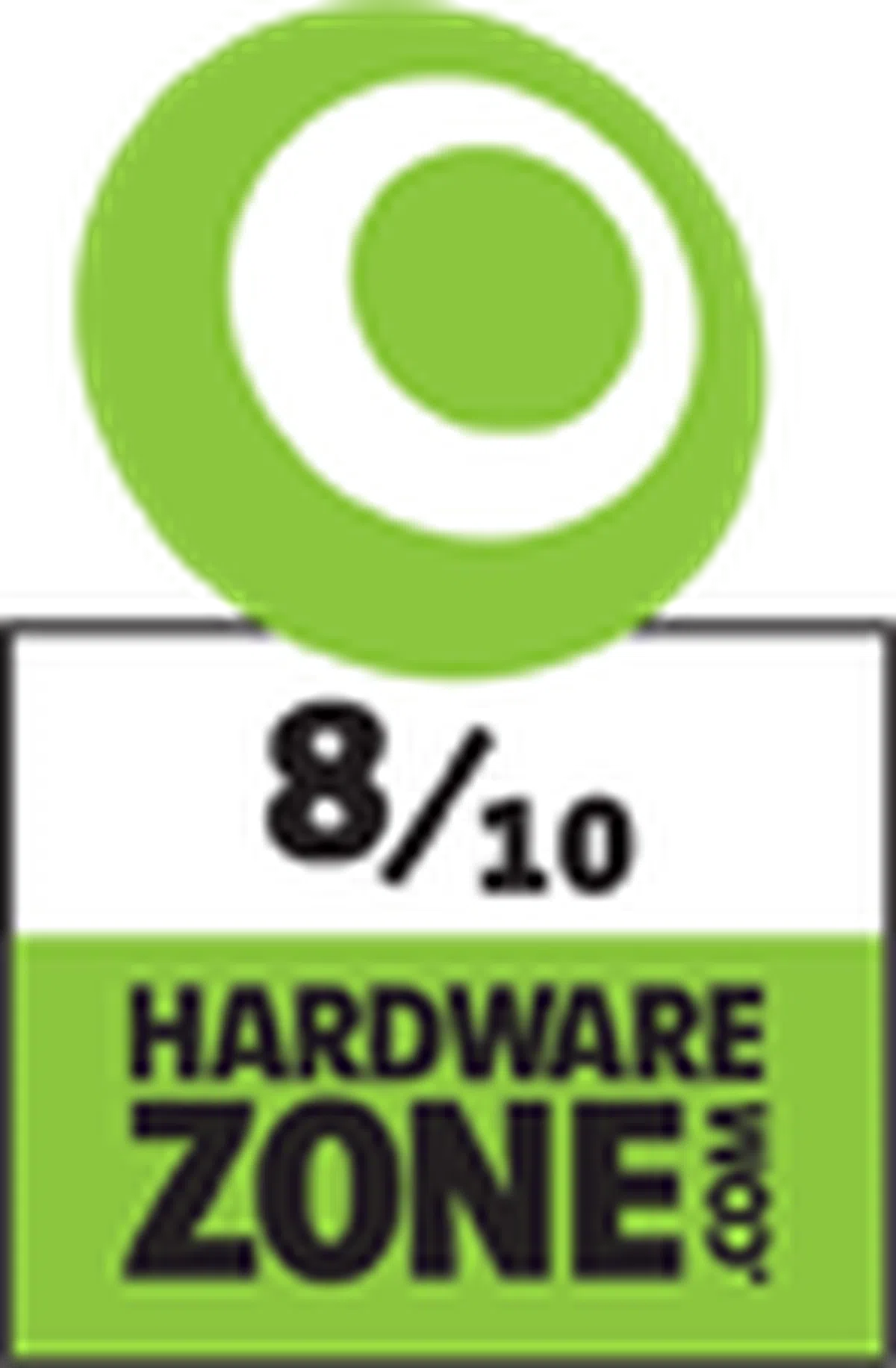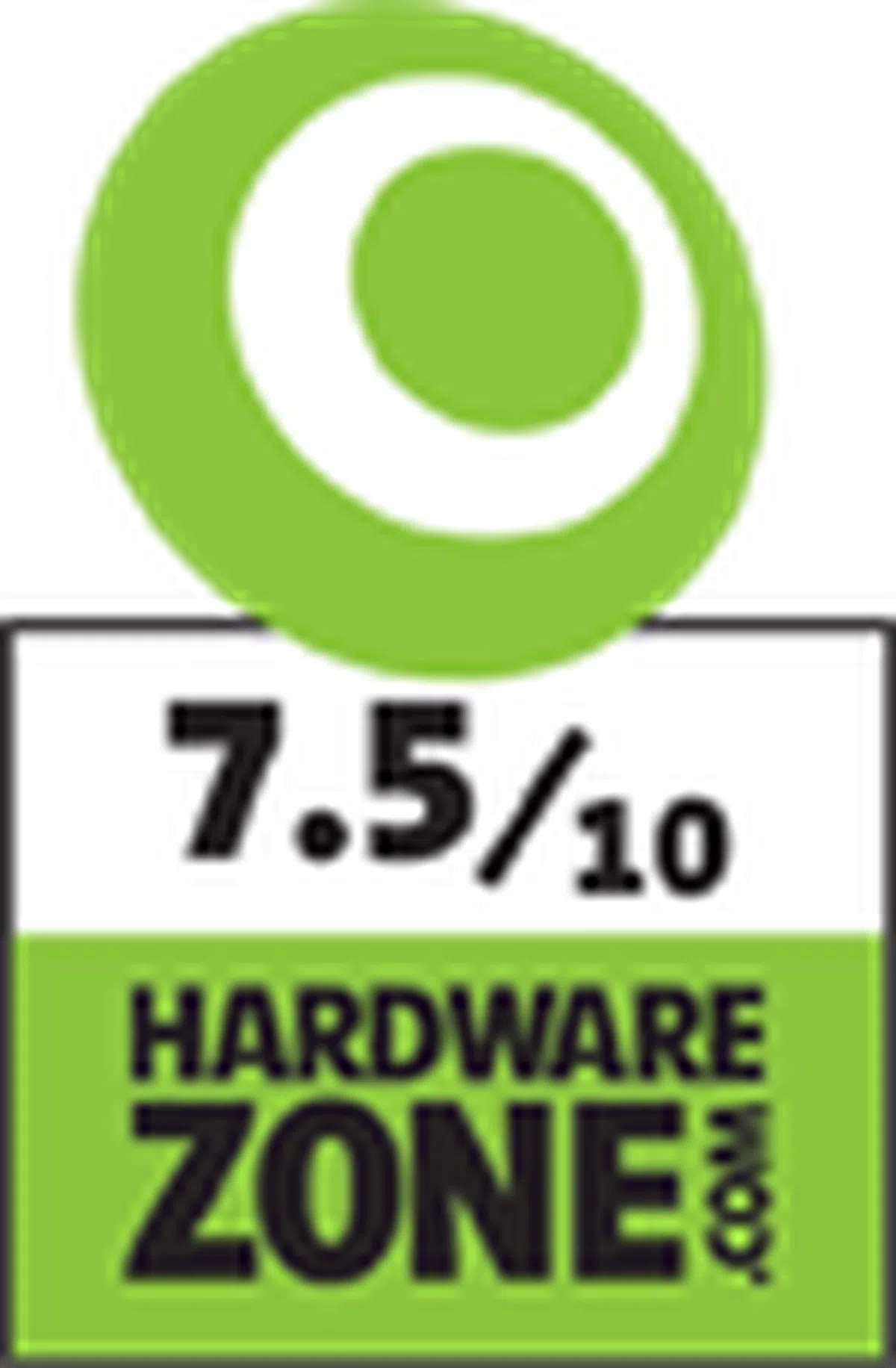Shootout: 4G LTE Smartphones Below S$600
Although phone makers today are championing devices with larger displays, there's still a fairly large consumer base who may not share a liking for them - be it because of the handling difficulty or their cost. As such, we rounded the latest compact smartphones with 4G LTE support from HTC, LG, Nokia, Samsung and Sony and put them through their paces. Find out who emerged as victor!
By Vijay Anand -
Modern Compact Smartphones You Can Count Upon
It goes without saying that the trend these days are ultra large smartphones and they've been steadily increasing in size for the past two years. While Apple increased the display size of its iPhone from 3.5-inch to 4-inch last year, Android OS vendors are increasingly pushing the boundaries by blurring the lines between smartphones and tablets.
Just recently, we've seen display sizes on large smartphones (phablets) swell as large as 6.44 inches across (Sony Xperia Z Ultra), while the current standard for a flagship/premium Android device is at 5 inches (ASUS PadFone Infinity, HTC Butterfly S, Samsung Galaxy S4, Sony Xperia Z).
But those are just the top-tier devices costing close to S$1000. Don't forget that a significant number of phone options are available below the 5-inch screen size mark that's targeted at the mid-range segment. These phones may not be as powerful as the high-end models, but they often offer most of the important features while having a distinct advantage over their larger counterparts - one-handed usability.
According to a Strategy Analytics report published on 30 April 2013, the most preferred smartphone screen size in the second half of 2012 is between 4.2-inch and 4.7-inch, with 4.5-inch as the most preferred size. With this in mind, we decided to round up various mid-range smartphones based on the following criteria:
- Screen sizes between 4.2-inch and 4.7-inch
- Mid-range model and pricing
- 4G LTE support to embrace high speed connectivity
This led us to these five smartphones - the HTC One SV, the LG Optimus F5, the Nokia Lumia 820, the Samsung Galaxy S4 mini and the Sony Xperia SP. Now, let's check out how the phone specs compare across the board:-

Here's the 5.5-inch LG Optimus G Pro on the left compared with the much more pocket-friendly 4.3-inch Samsung Galaxy S4 mini on the right. And yes, handling smaller phones are a lot easier too.
The premise of this shootout article is not to discredit large smartphones with displays 5 inches or larger, but rather, we would like to help the many consumers who find such large phones too big for easy handling and are deciding between the slightly more compact smartphone choices. Indeed we too share the same sentiments after having reviewed numerous phablets. When we returned to reviewing these five compact smartphones (comparatively speaking), our hands and fingers were relieved as needn't perform hand-gymnastics to operate these devices!
It's surprising how fast standards evolve as just a year ago, devices with a 4.3-inch screen were considered a norm for the upper-range of phones and today, we've so many models pushing the 5-inch screen size and thus relegating the smaller screen variants as second-class mainstream affair. Fortunately, many of these upper-class mainstream phones are crammed with good functionality (such as a good imaging sensor and 4G LTE support among others) that you would be hard pressed to pursue to pursue the premium models unless you need the bigger and higher resolution screen. So without further ado, let's check out what the five phones have to offer in the following few pages and find out who's the best among them.
HTC One SV

The HTC One SV is officially priced at $688 (inclusive of GST) without line contract, but you can get it for as low as $415 from other retailers.
The HTC One SV inherits some design traits from the company’s higher-end models such as the curvy edges, slightly tapered back and a polycarbonate chassis. A metal ring goes around the phone’s edges, giving it a more premium feel than it actually is. Its build quality is also good, and the heft of the device (122g) adds a solid feel in the hands.
On the front, you will find a 4.3-inch Super LCD 2 display with a resolution of 800 x 480 pixels. The earpiece grille is located at the top and three capacitive navigation buttons (back, home, menu) at the bottom. A 1.6-megapixel front-facing camera sits to the right of the earpiece grille.
The micro-SIM and microSD card slots are found underneath the back cover. In addition to the internal storage capacity of 8GB, HTC offers a two-year, free 25GB Dropbox cloud storage on the One SV.
The One SV ships with Android 4.1.2 Jelly Bean and Sense 4+, the latter which has few enhanced features such as a redesigned virtual keyboard, a revamped camera user interface and the inclusion of a Power Saver mode.

The bottom row of navigation keys is removed, leading to a more streamlined keyboard.

The camera user interface of the HTC One SV is one of our favorites.
On Sense 4+, HTC improves the interface by adding the option to switch between the front and rear facing cameras. By placing a shortcut on the user interface, consumers will find it easier to switch between the two cameras. The interface also gives an estimate of the number of shots or duration of videos that your phone can take before it runs out of storage. The digital zoom bar is now shifted to the side. While these changes may seem subtle, they actually make the interface more much user-intuitive and job well done by HTC.

Power Saver maximizes battery life on the HTC One SV and the control panel is aptly named that combines all the sub-options.
To improve the power management in its devices, HTC included the Power Saver mode. It is accessible either via the pull-down notification tab or Settings > Power. The Power Saver mode helps conserve battery through conserving CPU usage, reducing screen brightness, disabling vibration feedback and turning off data connection when screen is off.

A metallic rum goes around the side profile of the mostly polycarbonate build phone to give it a premium touch.
LG Optimus F5

The LG Optimus F5 retails for $498 (inclusive of GST) without line contract.
The first product of the "F" series, the Optimus F5 strikes the middle ground between the affordable "L" and the top-end "G" series. Not surprisingly, LG did not use the premium glass panel for the back of the Optimus F5 and instead throws in a removable, plastic back that sports reflective patterns. The overall finish of the Optimus F5 is decent, although the plastic back has notable flex. It is not particularly thin (9.3mm) or lightweight at 131.1g, but feels nice in the hands even though its slippery back can be a cause for concern.
Dominating the front of the Optimus F5 is a 4.3-inch IPS display with a resolution of 960 x 540 pixels. Other main highlights is the inclusion of a microSD slot (supports up to 32GB capacity cards) to augment the 8GB internal storage that bumps up the overall storage capacity up to 40GB . It also comes with a removable 2,150mAh capacity battery.
The Optimus F5 runs on Android 4.1.2 Jelly Bean and LG’s Optimus 3.0 user interface (UI). The Optimus 3.0 UI offers exclusive features such as zooming in recorded videos and the ability to run two apps simultaneously on the same screen via QSlide. This is the same set of features that was first incorporated on the top-end LG Optimus G as demoed in this video:-


QSlide is a multitasking feature on the LG Optimus F5.
If you've seen the video, you would quickly realize that QSlide is LG's answer to Samsung's Popup Play and Multiple Windows. You can run two apps simultaneously on the same screen. You could even set the transparency levels of the window to either bring it to prominence or not. For now, you can only choose two out of the five QSlide enabled apps. They are Videos, Internet, Memo, Calendar and Calculator.
Similar to S Memo on the Samsung Galaxy Note devices, LG also has its variant, QuickMemo. However, the absence of a stylus or pen input like the S Pen makes one truly appreciate the need for a stylus to be used in conjunction with such note taking apps.

You can enable QuickMemo on almost any app via the pull-down Quick Settings tab.
Afraid that you may miss out on taking the perfect shot at the right moment? The Optimus F5 allows you to quickly snap five photos at once so that you can preview them shortly and decide which one(s) to keep.

Time Catch Shot takes five pictures at one go so that you can select the best one(s) to keep.
Nokia Lumia 820
We've reviewed the Nokia Lumia 820 in detail when it was new, but we'll present a concise rundown of what it has in this page.

The Nokia Lumia 820 has a new recommended retail price of S$599 (UP: S$699, inclusive of GST) without line contract. However, you can easily obtain it for under S$500 at some retailers.
The Lumia 820 bears some resemblance to the Lumia 920, but it still holds its own. While it comes with the familiar polycarbonate chassis, it is modified to take on a less angular form and sports a removable back cover.
We feel the rounded corners make it easier to hold compared to the Lumia 920. Although we appreciate the convenience of having a removable back cover, it is ridiculously hard to remove it to access the 1,650mAh battery, microSD and micro-SIM card slots.
The black hardware buttons are all located on the right side of the Lumia 820 which makes for simpler operation; they include the volume rocker, power and camera shutter button. They are also sufficiently raised for good tactile feedback when pressed.
Housed in the polycarbonate body is a 4.3-inch AMOLED screen with a resolution of 800 x 480 pixels, which is a far cry from the Lumia 920’s PureMotion HD+ IPS display, and most of its rivals in this comparison. Its 8GB internal storage is augmented by microSD card support and 7GB free SkyDrive cloud storage.
The only non-Android phone in this roundup, the Lumia 820 is powered by Windows Phone 8. It also comes with Nokia’s exclusive apps and services such as Nokia City Lens, Nokia Maps and App Highlights (that we've shown in detail with the Lumia 920 review).
The Live Tiles on the start screen can be resized - small, medium and large.The rationale behind the new Smart Screen is to allow Window Phone users to customize the start screen based on what's important to them - music, communication, productivity or anything else. However, not all Live Tiles can be resized to small, medium or large. The extent of this allowance really depends on how the apps have been designed. | Nokia has a pretty extensive range of apps that are already downloaded on the device. If you are looking for more, you can head into Nokia's own Apps Highlights app for a couple of choice recommendation. Nokia Exclusives section contains apps that are only available on Lumia devices. Some of the apps include HERE Maps, HERE Drive+ Beta and Nokia Trailers. It also offers a selection of apps based on the country (in this case, Singapore), which makes it convenient for local users to find the apps they need to use. |
Laslty, Nokia Lenses is a selection of photo apps that adds extra functionality to your photo-taking process on Lumia devices such as traditional photography tools like stitching several shots together into a panorama, applying color or tone filters or capturing several shots in rapid succession. You can add more apps via the Windows Phone marketplace, including Nokia's own Cinemagraph (creates GIF files), Panorama and Smart Shot apps.

Unleash your photo creativity with Nokia Lenses.
For a more detailed review of the Nokia Lumia 820, check out our full review from last year.
Samsung Galaxy S4 mini

The Samsung Galaxy S4 mini costs $698 (inclusive of GST) without line contract.
As the name suggests, the Galaxy S4 mini follows in the footsteps of the bigger Galaxy S4. Just announced a few weeks ago at Samsung's big launch in London, we had a quick hands-on of the device and today, we're going to see how it decks up against other contenders in its class.
Like its larger sibling, the Galaxy S4 mini adopts a similar plastic chassis that makes the device the lightest among the comparisons in this article at just 107g. It is also the most compact phone in this comparison with the smallest footprint and thinnest side profile (8.94mm). Hence, the Galaxy S4 mini feels the most comfortable to use in one hand.
Above the 4.3-inch Super AMOLED display are the front speaker, a 1.9-megapixel front camera, and the ambient light and proximity sensor. Below the display is the physical home button flanked by the menu (left) and back (right) capacitive buttons.
While it is stated to come with 8GB onboard storage, there is approximately only 5GB of available storage space. Fortunately, a microSD card slot located beneath the 1,900mAh battery supports memory cards up to 64GB in capacity.
Samsung ships the Galaxy S4 mini with Android 4.2.2 Jelly Bean and its customized user interface, TouchWiz. Many of the features that debut on the Galaxy S4 can be found on its mini variant, which include taking images with audio via Sound & Shot, multiplayer gaming and group music play via Group Play, and instant text or voice translation via S Translator. Other functions that are also brought over are Smart Scroll, Smart Pause, Air View, Air Gestures and more. We've included some videos below that demonstrate these functions as seen on the Galaxy S4:-

Using the front-facing camera to monitor your eye activity, Smart Stay ensures the screen stays awake and does not dim or lock the screen as long as you are looking at it. This makes for an uninterrupted reading experience even when you have set your screen timeout to stinge on battery. We found it to be mostly accurate given that a reasonable distance is maintained from the device and as long as your line of vision is level with the camera. An quick way to find out if it's working is when you see an eye icon on the top of the notification bar appearing.

Smart Stay makes use of the front-facing camera to detect whether you are looking at the display.

Samsung has also kept the brand new camera user interface seen on the flagship Galaxy S4 on the mini and this greatly upgrades its camera taking experience from the previous Galaxy S III and S III mini devices. To bring more "life" to your still images, Samsung included the Sound & Shot feature that allows you to capture 9 seconds of audio in a photo. This results in an immersive visual and audio experience - or at least that's what they claim. Like the many features that Samsung had included in their devices, whether all of them are useful depends on each individual.


Sound & Shot enables you to record up to 9 seconds of audio with a photo.
Lastly going back to the core of things, take note that Android 4.2 introduces Quick Settings, which consists of shortcut to Settings, Wi-Fi, Cell Connection, Battery, Bluetooth and Wireless Display. For Samsung's mobile devices running on Android 4.2, it has changed the interface to include more toggles. The Galaxy S4 mini has a total of 16 toggles. You can rearrange which toggle to appear first or what toggle to include. This can be done via Settings > My device > Display > Notification panel. From there, you can customize the toggles according to how often you use them. Press and hold on each toggle to arrange it.

Samsung's version of Quick Settings
Sony Xperia SP

The Sony Xperia SP is priced at $598 (inclusive of GST) without line contract.
Being the only device in this roundup to come with a 4.6-inch display, it is only natural that the Xperia SP is not in the running for the most compact of the lot. While Sony does have a suitable 4.3-inch contender in the form of the Xperia V (yes, the same phone featured in the last James Bond movie Skyfall), it is unfortunately more expensive and is actually similar in size to the Xperia SP while actually being thicker! The Xperia V was targeted as a premium 4.3-inch device with a durable water resistant body, has a high resolution screen (1280 x 720 pixels) and a higher-end 13MP imaging sensor. These are key reasons why the Xperia V has a suggested retail price that's S$100 more than the much more recently introduced Xperia SP. Furthermore, the Xperia V was introduced nearly a year ago at last year's IFA show even though it was only in stores in December 2012.
Considering our requirements, the newer Xperia SP that sports a larger screen at about the same physical size of the Xperia V with an updated Android OS is a better option and a more practical fit for our shootout. Although the Xperia SP is a tad less portable than the rest, it makes up for that in the design department. Using a matte plastic back cover similar to that of the HTC One SV, the Xperia SP provides a secure grip of the device. While the body is mainly made of plastic, there is an aluminum frame running all around the phone, giving the device a solid feel.
What’s unique about the Xperia SP is the transparent strip at the bottom of the phone. The strip can be personalized to change color when notifying you of incoming messages and calls. It also changes color according to the color theme used on the phone, or the dominant color of the image you are viewing and even lights up along with the beat of your music.
The Xperia SP comes with 8GB internal storage and a microSD card slot that supports memory cards up to 32GB in capacity. This means a total storage capacity of up to 40GB.
On the software front, the Xperia SP is powered by Android 4.1.2 Jelly Bean. While Sony does not include a customized UI, it preloads the company’s signature media apps and features such as Walkman and Battery Stamina Mode.

Sony's almost stock Android user interface on the Xperia SP.
If there is one thing we would like to highlight about Sony's mobile devices (besides aesthetics), it is the user experience that mimics an almost stock Android interface. Unlike HTC, LG and Samsung, Sony refines the Android interface slightly on its mobile devices.
To push its ecosystem of apps and services that are already in place, Sony preloads some of its own apps (WALKMAN, SONY Select, PLAY NOW and Xperia LINK) on the Xperia SP.
Sony's novel approach to multitasking - Small Apps
Pressing the Recent Apps button will reveal the multitasking menu on the right, and a shortcut bar dedicated for "small apps". What are "small apps"? They allow for deeper multi-tasking, quite in the same vein as Samsung's multi-window feature or LG Optimus's QSlide function. There's more to play with however, considering the potential of an open-source app environment that this feature supports. Four small apps come pre-installed but you can add on to the collection by simply clicking on the "+" sign. This will redirect you to Google Play. Clicking on a small app, say Calculator for example, brings out a mini calculator pop-up that can be used and is visible/functional even as you are utilizing other apps. The downside is that you can only open one small app at a time. However, we think the functionality is sufficient. Small Apps first debuted in the Xperia Tablet S and then their more famous Xperia Z smartphone. In that manner, it's good to see key features from more prominent devices are being filtered down to even the mid-tier devices like the Xperia SP. |
Similar to HTC's Power Saver mode and Samsung's Power Saving mode, Sony also has an energy saving mode called Stamina Mode. Enabling Battery Stamina Mode will disable Wi-Fi, mobile data and most applications temporarily. You will still be able to receive phone calls, text messages, Sony Calendar notifications and alarm signals. The Music Player and FM radio will continue to work, while downloads and uploads are allowed to finish.

Sony's Stamina Mode.

The front-facing shot of the five phones. <br> From left to right: HTC One SV, LG Optimus F5, Nokia Lumia 820, Samsung Galaxy S4 mini, Sony Xperia SP.

The rear shot of the five phones. <br> From left to right: HTC One SV, LG Optimus F5, Nokia Lumia 820, Samsung Galaxy S4 mini, Sony Xperia SP.

Most of the phones have their micro-USB ports located at the bottom except for the Sony Xperia SP, which has it on the top left corner. From Top to bottom: Sony Xperia SP, Samsung Galaxy S4 mini, Nokia Lumia 820, LG Optimus F5, HTC One SV,

A shot taken of the left side of the devices. Since the Xperia SP is the only device with a larger screen, it's a little longer than the rest of the phones. From Top to bottom: Sony Xperia SP, Samsung Galaxy S4 mini, Nokia Lumia 820, LG Optimus F5, HTC One SV.

A shot of the right side of the devices. The Sony Xperia SP (top) and the Nokia Lumia 820 (center) are the only two devices in this article to come with a dedicated camera shutter button.

The top view of the five phones. From Top to bottom: Sony Xperia SP, Samsung Galaxy S4 mini, Nokia Lumia 820, LG Optimus F5, HTC One SV.
Performance
While we usually start off our performance comparisons with the Android OS based Quadrant benchmark to assess the phone's processing capabilities, we doubt that's the most important aspect one's looking out for in mid-tier phones. Besides, the numbers don't really dictate how the phones handle in real usage where these and many other devices fare decently. And since we've a Windows Phone 8 device among the comparison, we've chosen to compare mobile browsing response time with the SunSpider JS benchmark which is browser-oriented and not OS specific. Following that, we proceeded with our usual battery life testing.
SunSpider JavaScript Benchmark
SunSpider Javascript serves as a common benchmark that measures the browsing performance of mobile devices, and is applicable for all mobile platforms. It not only takes into consideration the underlying hardware performance of a device, it also assesses how optimized a particular mobile platform is to deliver a high-speed web browsing experience on its default browser. It is important to note that for this benchmark, a lower figure indicates a better web browser performance on a mobile device as it measures the time taken in milliseconds to complete the scripted benchmark.
Device | HTC One SV | LG Optimus F5 | Nokia Lumia 820 | Samsung Galaxy S4 mini | Sony Xperia SP |
CPU | Qualcomm Snapdragon S4 dual-core 1.2GHz | Qualcomm Snapdragon S4 dual-core 1.2GHz | Qualcomm Snapdragon S4 dual-core 1.5GHz | Qualcomm Snapdragon 400 dual-core 1.7GHz | Qualcomm Snapdragon S4 dual-core 1.7GHz |
GPU | Adreno 305 | Adreno 225 | Adreno 225 | Adreno 305 | Adreno 320 |
RAM | 1GB | 1GB | 1GB | 1.5GB | 1GB |
OS | Android 4.1.2 | Android 4.1.2 | Windows Phone 8 | Android 4.2 | Android 4.1.2 |

The Nokia Lumia 820 takes the crown in the SunSpider Javascript benchmark with a significant lead over its Android counterparts, and is the only phone in this comparison to complete the task below the 1,000ms mark. Perhaps the Lumia 820's default Internet Explore browser contributes quite a bit to the outcome too. Meanwhile, Samsung’s Galaxy S4 mini ranks a distant second at 1,385ms and is followed closely by the Sony Xperia SP. HTC came up last even though its processing platform is equivalent to the LG device.
Battery Mileage
Our standard battery test for mobile phones includes the following parameters:
- Looping a 800 x 480-pixel video with screen brightness and volume at 100%
- Wi-Fi and Bluetooth connectivity turned on
- Constant data streaming through email and Twitter
Specifications/Device | HTC One SV | LG Optimus F5 | Nokia Lumia 820 | Samsung Galaxy S4 mini | Sony Xperia SP |
Processor |
|
|
|
|
|
Display Size |
|
|
|
|
|
Display Type |
|
|
|
|
|
Display Resolution |
|
|
|
|
|
Dimensions |
|
|
|
|
|
Weight |
|
|
|
|
|
Battery |
|
|
|
|
|
Repeating the Galaxy S4's top-notch battery performance in the 5-inch smartphone segment, the Samsung Galaxy S4 mini managed to come up well ahead of the competition with a chart topping battery uptime of over 10 hours! Peering into its power consumption figures, we can clearly see the Galaxy S4 mini is the most frugal of the lot and a big portion of this lead is thanks to its power efficient Super AMOLED display that it touts.
Following a distant second place is Nokia's Lumia 820 clocking in a mileage of six hour which is an impressive feat for a Windows Phone device to last longer than many of its Android counterparts which have larger battery capacities. It is also the only other phone besides Samsung to use an AMOLED display, but it sports the earlier generation variety and the power consumption chart does show a corresponding 30% difference when compared to the Galaxy S4 mini. While screen technology is just one of the determining factors for the state of the phone's power consumption, it certainly contributes a high percentage. But to prove our point, if you factor in Nokia's 15% lower battery capacity compared to the Samsung counterpart and also factor in Samsung's 30% better power efficiency, the Lumia 820 can last almost as long as the Galaxy S4 mini. So Samsung is indeed leading purely by its technological superiority.


As for the other phones like HTC and LG, they are very middling performers with LG having a very high power consumption figure that's sapping its high capacity battery dry unusually fast. Of course, the worst of the lot is the Sony Xperia SP with its larger screen. You would think that the 4.6-inch screen is enough reason to give it some leeway for its outcome, but in actual fact, it's also performing below expectations when compared to other phones sporting a similar size and higher resolution screen.
Moving on to our Portability Index, it was no surprise to see the Samsung Galaxy S4 mini excel as it had the longest battery mileage, the most compact physical form factor, the sleekest at just 8.94mm thin and the lightest phone at 107g. The HTC One SV takes up a distance second place, while Nokia's Lumia 820 fell a few more positions below due to its bulkier build and weight. Don't forget that part of the reason why the Lumia 820 has to put with its physical attributes if because of its integrated wireless Qi charging capability. To find out more, we've written more about this wireless charging standard over here. So in Nokia's case, it's trade-off between features and physical form. In fact, to ensure its leading phone is leaner, the upcoming Lumia 925 has kept the wireless charging capabilities integrated on its accessories and not in the phone.

Conclusion
After many months of reporting and reviewing the top-tier smartphones and those that serve as a cross between tablets and smartphones, we paused to consider the many mid-range phone options in a bid to highlight more manageable and handy smartphones for consideration. For one, we find the immensely larger devices getting more tricky to handle as a phone and we know deep in our hearts that there is a large audience who aren't looking for the most flashy, over-the-top devices and certainly don't mind more practical options. Besides, the lower price points are sure to be attractive too.
With that in mind, we scoured for the latest that each major brand has to offer in their mid-range portfolio that featured fairly updated operating systems and modern features like 4G LTE support and NFC. To our surprise, most of them were priced in the S$500 to S$600 region and featured many of the features found on the top-tier devices (suffice to say, that's how we derived at our article title too). Even more surprising, we managed to squeeze in Sony's Xperia SP featuring a 4.6-inch, 720p HD screen - the best of the lot. After handling these phones for sometime and putting it through their paces, here's the final outcome:-
HTC One SV | LG Optimus F5 | Nokia Lumia 820 | Samsung Galaxy S4 mini | Sony Xperia SP | |
Design | 8.5 | 7.5 | 8.0 | 9.0 | 8.0 |
Features | 8.0 | 8.5 | 8.5 | 9.0 | 8.5 |
User-Friendliness | 8.5 | 8.5 | 8.0 | 8.5 | 8.5 |
Performance | 7.0 | 7.0 | 9.0 | 9.5 | 6.5 |
Value | 8.0 | 7.5 | 8.5 | 8.5 | 7.0 |
Price | S$498 | S$598 | |||
Overall | 8.0 | 7.5 | 8.5 | 9.0 | 7.5 |
Take note that we had to factor in street price rather than suggested retail prices since some of the phones have been in the market since last year, while some others have only recently launched. The time of availability of each device is beyond our control since every vendor has its own roll-out plans. As such, our article is only accurate at the point of publication. Having said that, here's a summary of each smartphone for this comparison and their final standings:-
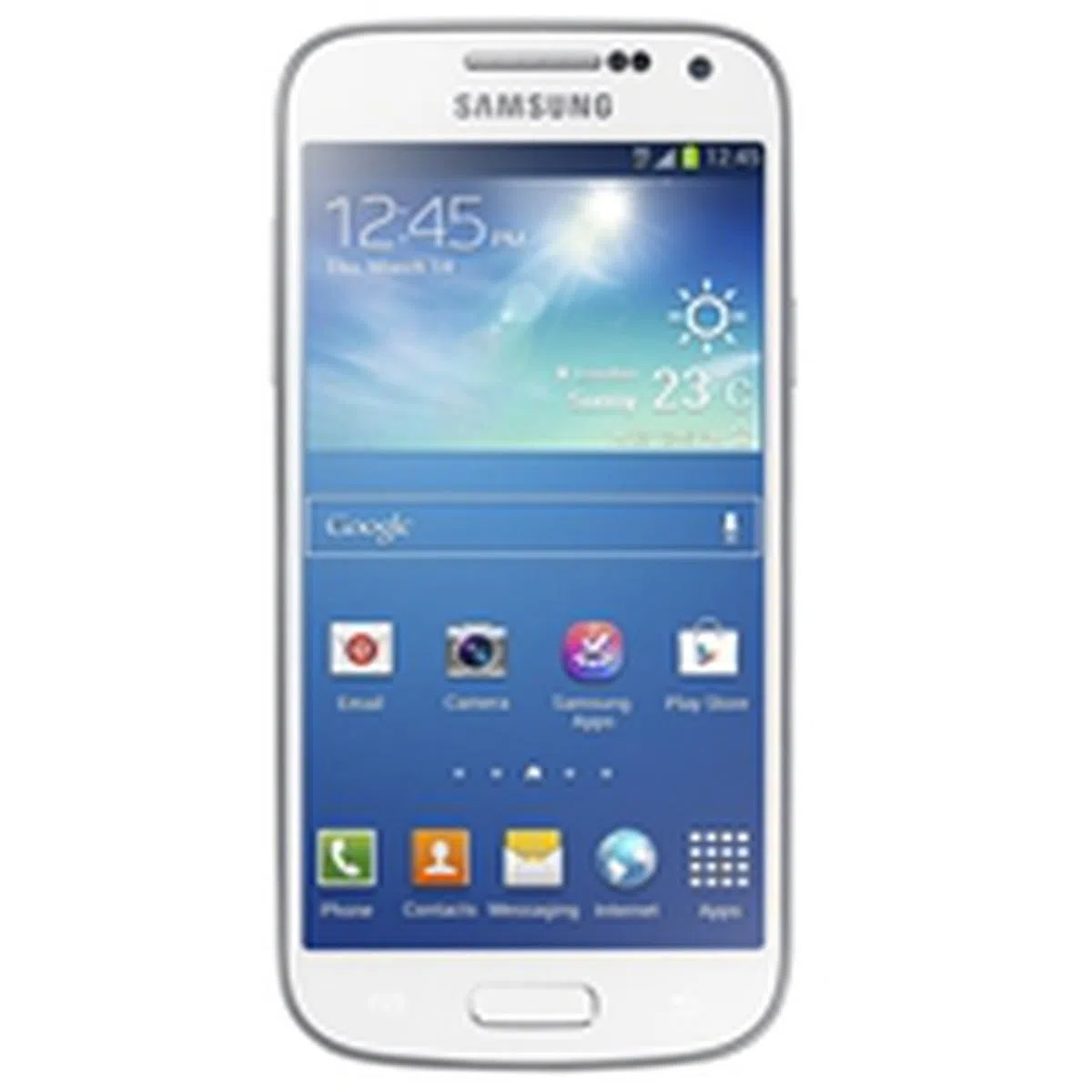 | The Samsung Galaxy S4 mini delivers on all fronts. Its 4.3-inch Super AMOLED display is one of the best screens in the industry with rich and vibrant colors. Its compact form factor also makes it very easy to use in one hand. Software-wise, it is the only device running on the latest Android version (4.2.2, but it's also because the phone was the most recently launched) and has a healthy serving of Samsung’s TouchWiz features such as Smart Stay, Air Gestures and many more. More importantly, the Galaxy S4 mini offers the longest battery life alongside good overall performance. It is also one of the better phones for photography and taking self portraits with its secondary 1.9MP camera. | |
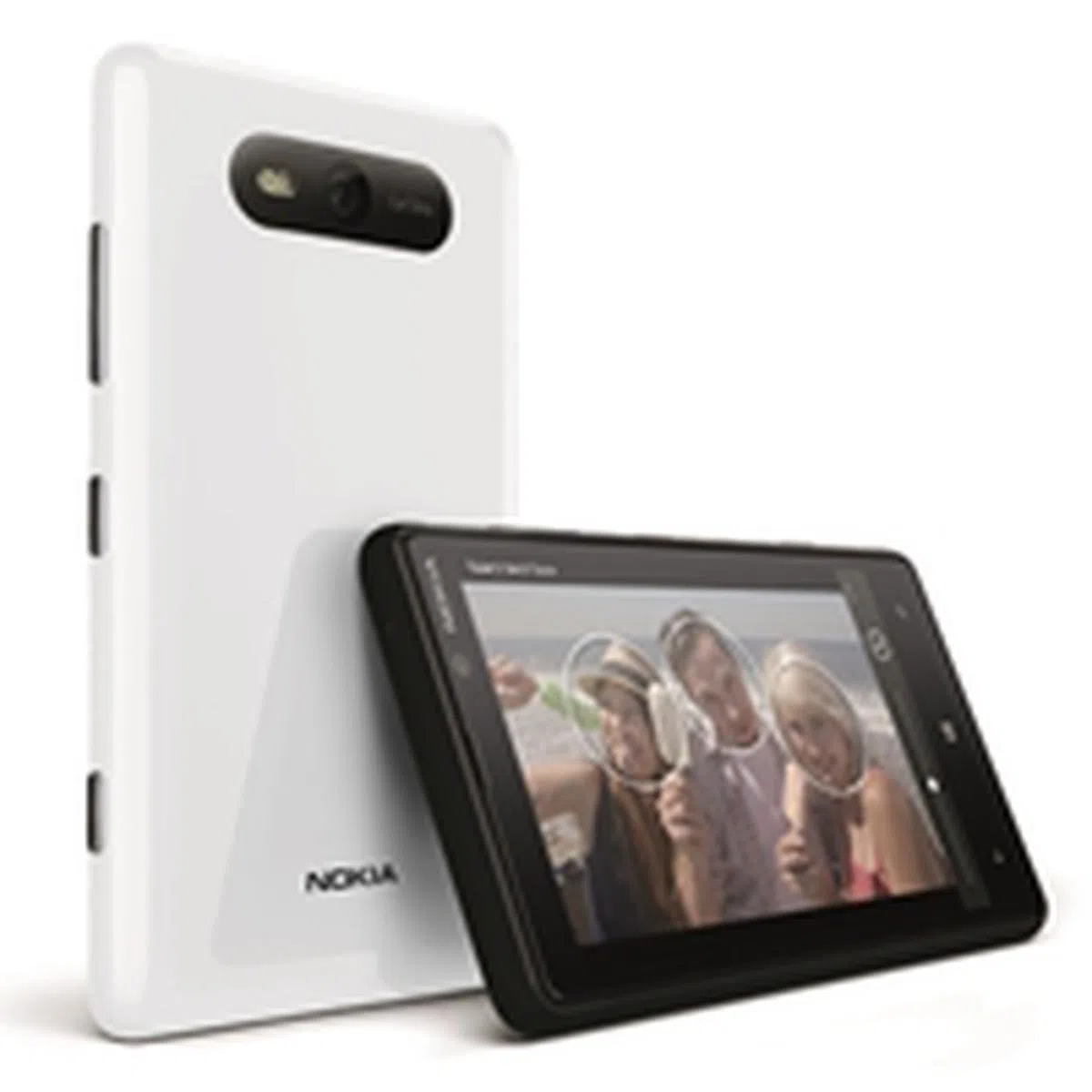 | Although the market is gravitating towards the Android ecosystem, the Nokia Lumia 820 is still a competent smartphone on almost every count - even nearly after a year since its launch. Its polycarbonate chassis feels sturdier than its competitors, and the distinctive design sets it apart from the sea of lookalikes. Something extra that it possess is built-in support for wireless Qi charging that works in tandem with compatible accessories. The Windows Phone OS may not be as popular as Android, but it provides a refreshing user interface with resizable Live Tiles. In terms of performance, the Lumia 820 consistently ranks among the top few in our benchmarks and we've established its imaging quality is among the best for its class. Further to that, you should also factor the Nokia-only apps that value-add the phone's experience such as Nokia City Lens, Nokia Maps, Nokia Drive+ and Nokia Music. We only have a couple of points against it and that's the device's screen resolution and slightly bulkier build. Otherwise, we think it's a great option among this class of phones that the rating we gave last year, is still fully applicable and we've topped it up with our Best Value Award. How's that for the Lumia 820's strong proposition? | |
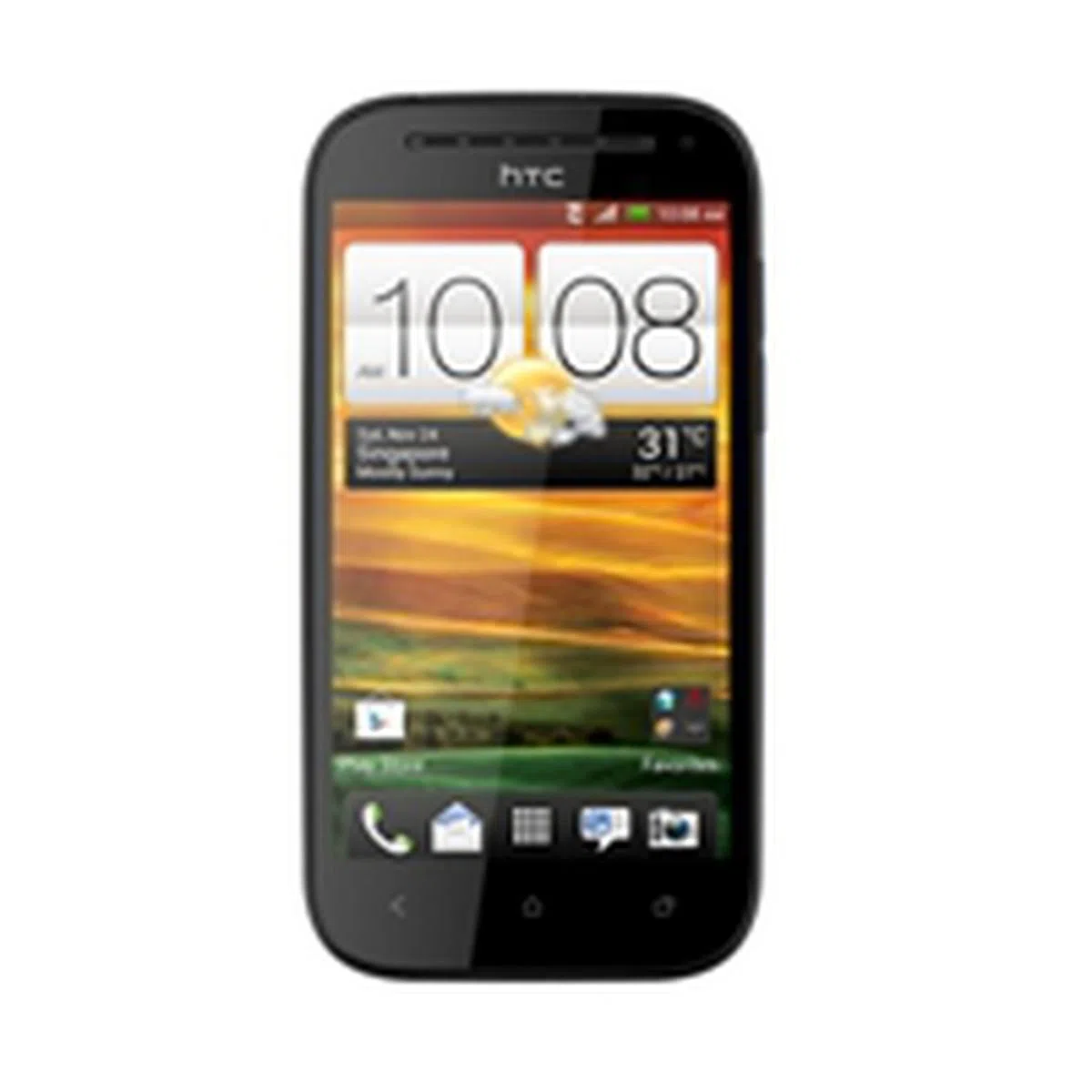 | The HTC One SV has one of the better design and build among the phones compared in this article, but its availability in the market since December 2012 made its software features and performance seem dated compared to its rivals which are more released recently. HTC needs to accelerate its plans to bring an updated midrange Android smartphone with 4G LTE connectivity to consumers if it still wants a slice of this market. We certainly hope these leaks and rumors are true on a 4.3-inch HTC One mini. We've waited more than a month before deliberating on going ahead with this shootout and the HTCOne SV is still the most appropriate offering for mid-range device with 4G LTE. Despite its age, fortunately the HTC Sense 4+ user interface and its imaging interface is still friendly and easy to use. Also not to forget, it's got the next best secondary camera that has 1.6MP sensor, ideal for selfies. If you're looking for the most affordable 4G smartphone with a reasonable feature set, the HTC One SV is a decent option with a nice build. | |
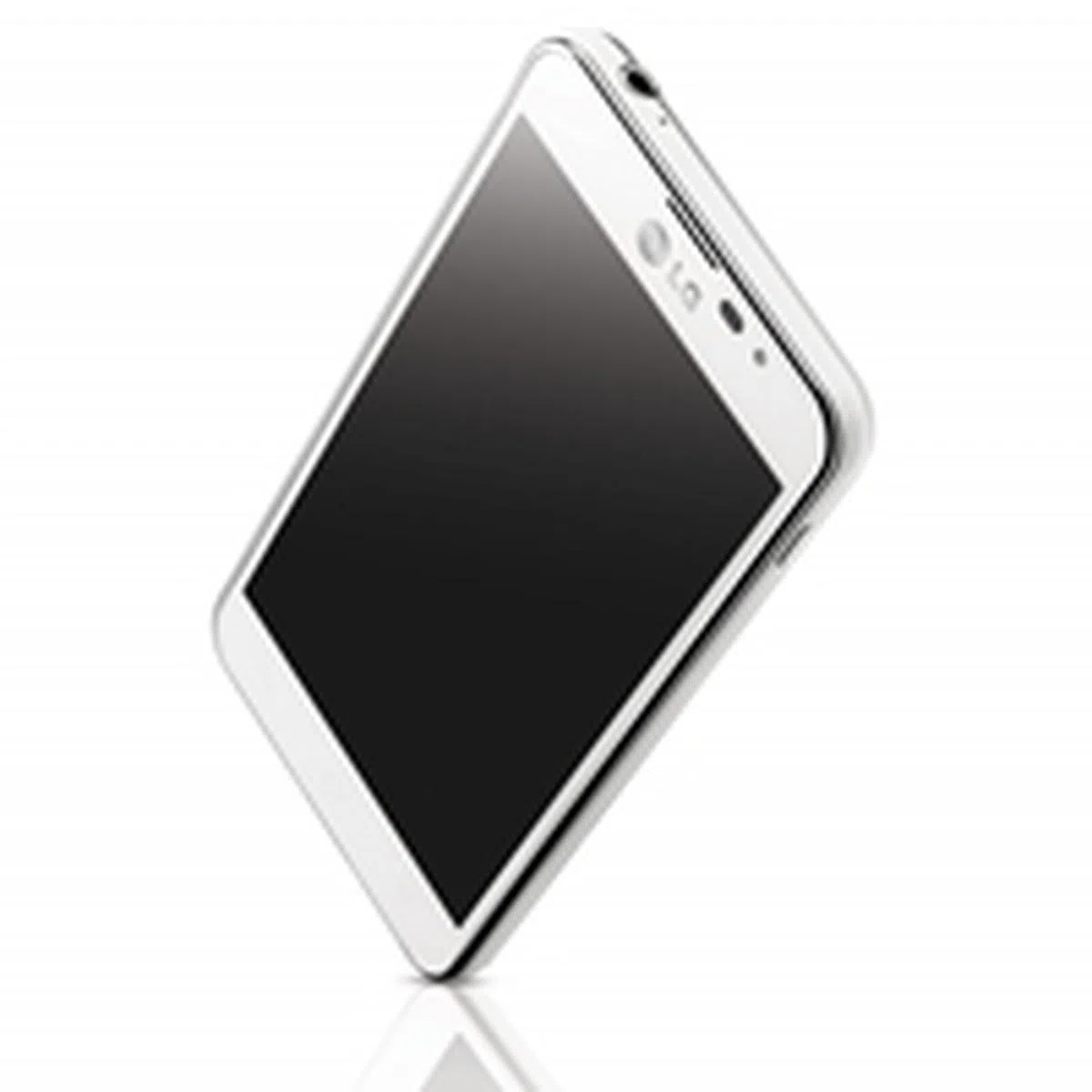 | The LG Optimus F5 boasts some of the features found in its higher end models such as QSlide and QuickMemo, which makes it quite appealing. What we dislike about the phone is its plastic chassis that exhibited notable flex. Further to that, the 131g weight which is a by-product of the phone's beefy battery which unfortunately didn't help much due to its high power consumptions. As such, its overall performance is a little underwhelming compared to the competition (factoring in design, performance, and price). What LG has going is its nice feature set at its price point, but not much else. We would suggest users to give it a try if you like its handling and interface. | |
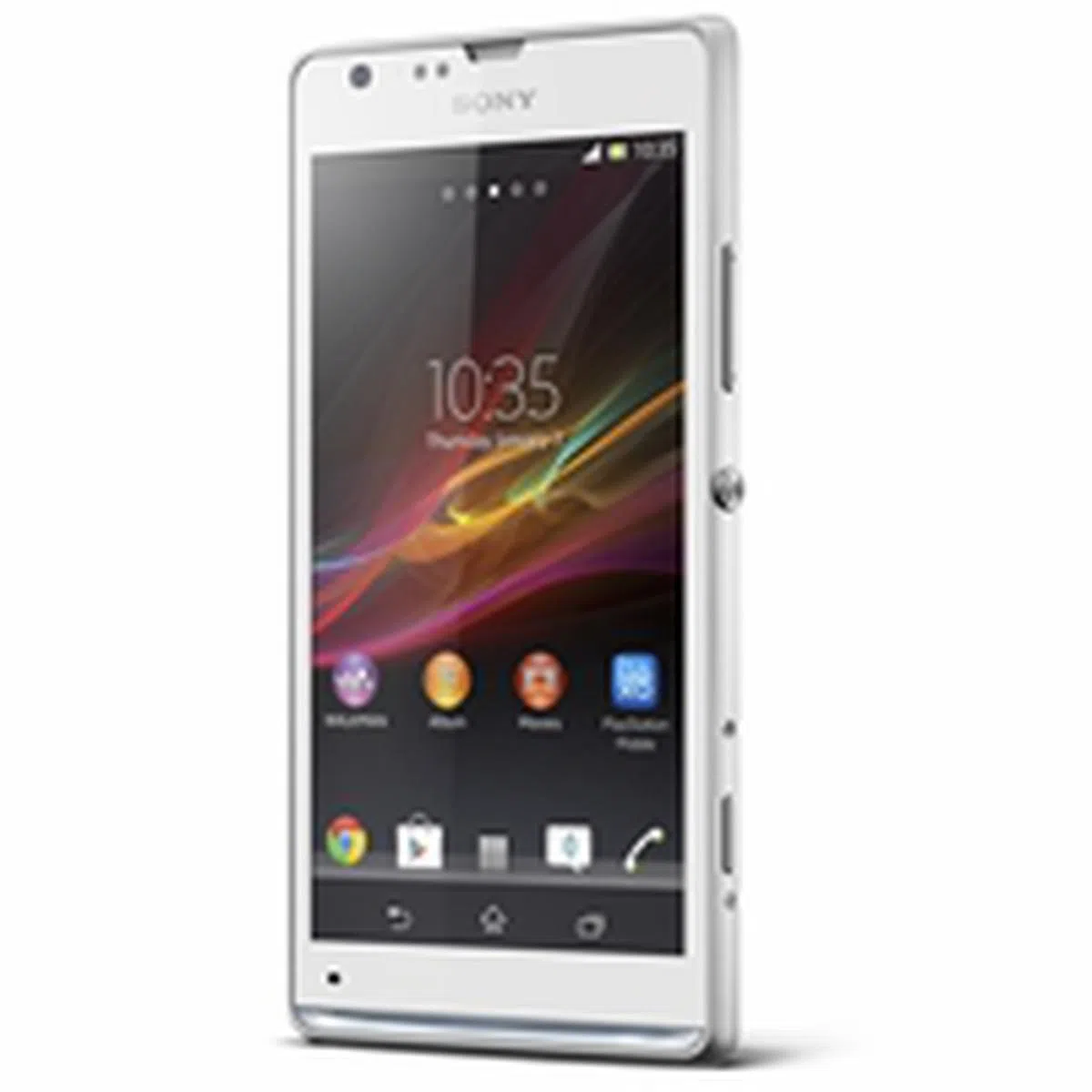 | Last, not least, we find the Sony Xperia SP to be lagging behind the competition in some key areas. It fared the worst in the battery performance benchmarks while delivering an average performance in the SunSpider Javascript benchmark. Fortunately, the Xperia SP still sports a solid design, good handling and has the best screen resolution among the comparison. It is also the only phone in the comparison that officially supports an MHL connection from its micro-USB port to connect with HDMI equipped TVs - a feature often reserved for upper-class phones. However, for not much more, you could actually get better phones such as the LGOptimus G, LG Nexus 4 and others that are more premium devices, hardly much larger than it and in fact, lighter than than the Xperia SP. As such, the Sony Xperia SP finds itself in a peculiar position that doesn't excel among the mid-tier nor the upper-tier phones despite having most necessary features. | |
Our articles may contain affiliate links. If you buy through these links, we may earn a small commission.
